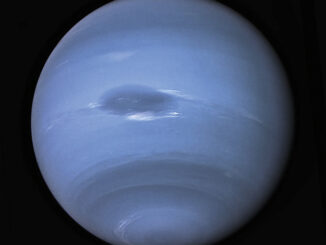
Epsilon (ε) Lyrae is a showpiece multiple star for double star enthusiasts, famously coined the ‘Double Double’. It’s a challenging target to split with the naked-eye, appearing as a fairly tight double star of closely matched fifth-magnitude stars. Epsilon is marvellously transformed through even a small telescope, revealing that each star is itself a double! Together with the Trapezium in Orion, it’s probably the best multiple star of all.

How to observe
The Double Double is very easy to locate, lying a mere 1.6 degrees north-east of blazing Vega (magnitude +0.03), the fifth-brightest star in the entire sky. Epsilon1 Lyrae (magnitude +4.67) lies to the north (slightly west too; position angle [PA] ~350°) of epsilon2 Lyrae (+4.59). The pair are separated by 3.5”, an easy task to split through binoculars, though you’ll need an excellent night and keen eyesight to see them as two stars without optical aid.
Swing a small telescope epsilon’s way on a steady and transparent night and with medium- to high-magnification you should be able to split both stars into their individual components. Observers report a ‘scope of just 60mm (~2.4 inches) in aperture can get the job done, but seeing conditions on the night are liable to be the determining factor as to how large a telescope you’ll need.
Epsilon1 (STF 2382) splits into binary components (A and B) of magnitudes +5.2 and +6.1 that lie 2.2” apart at a roughly north–south orientation (PA 347°). The stars have an orbital period of around 1,800 years. Epsilon2 (STF 2383) consists of magnitude +5.3 and +5.4 stars (C and D) that are separated by 2.3” at a PA of 79° (almost east–west). They take around 700 years to complete an orbit. All the stars are class-A white stars.




